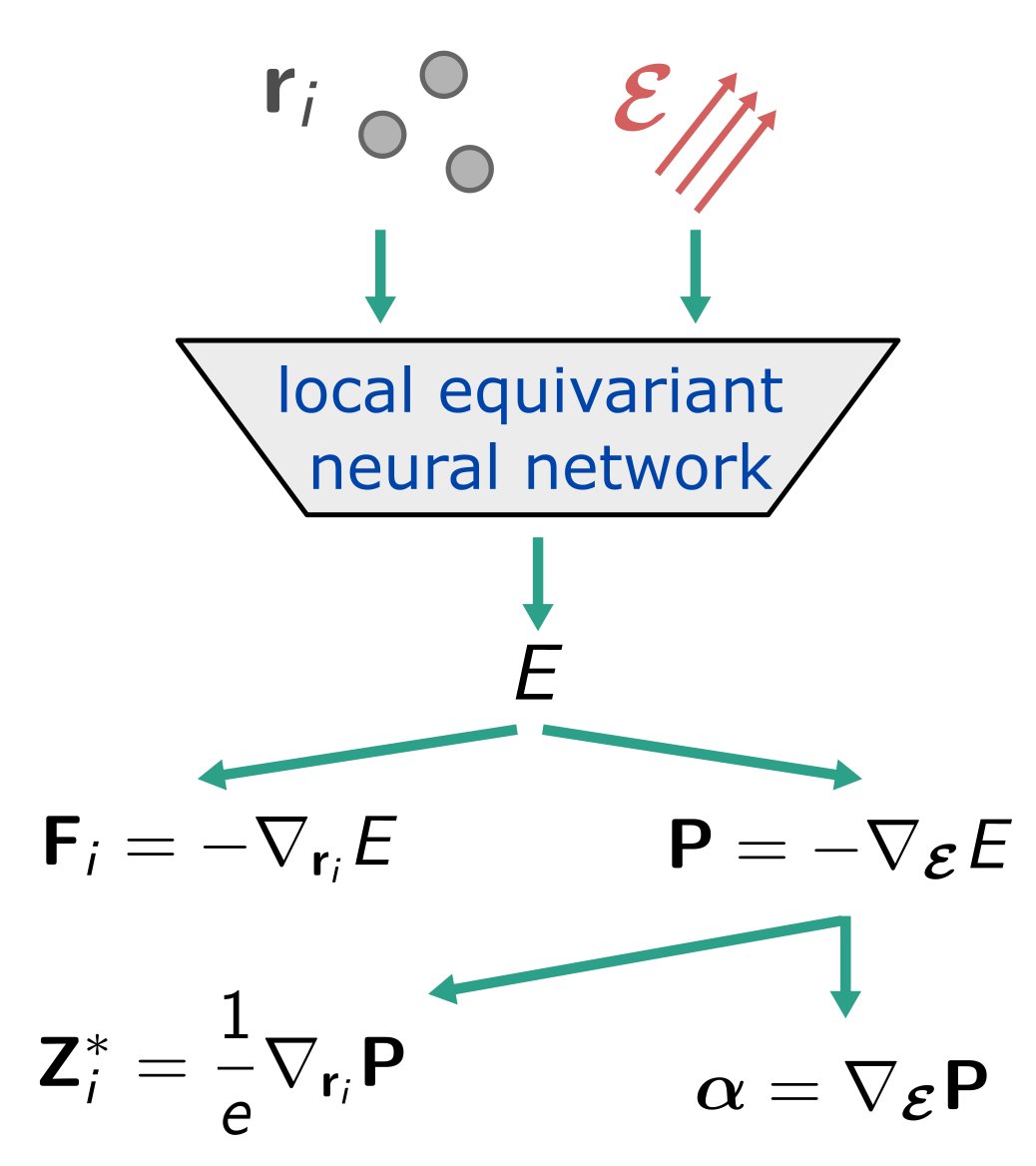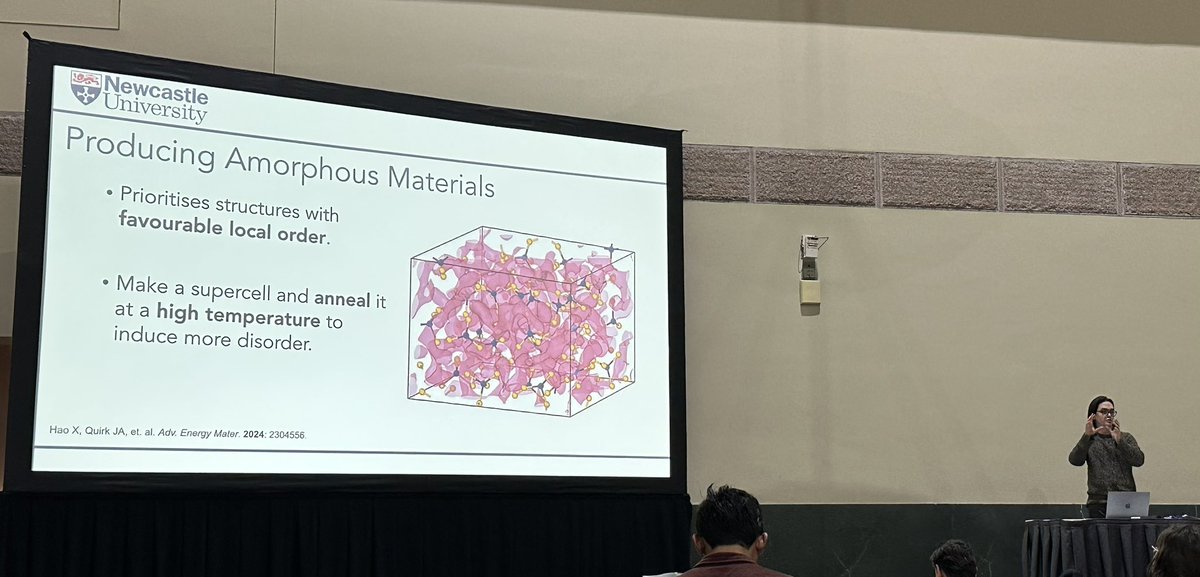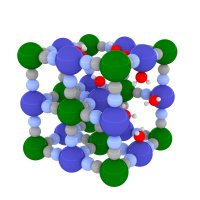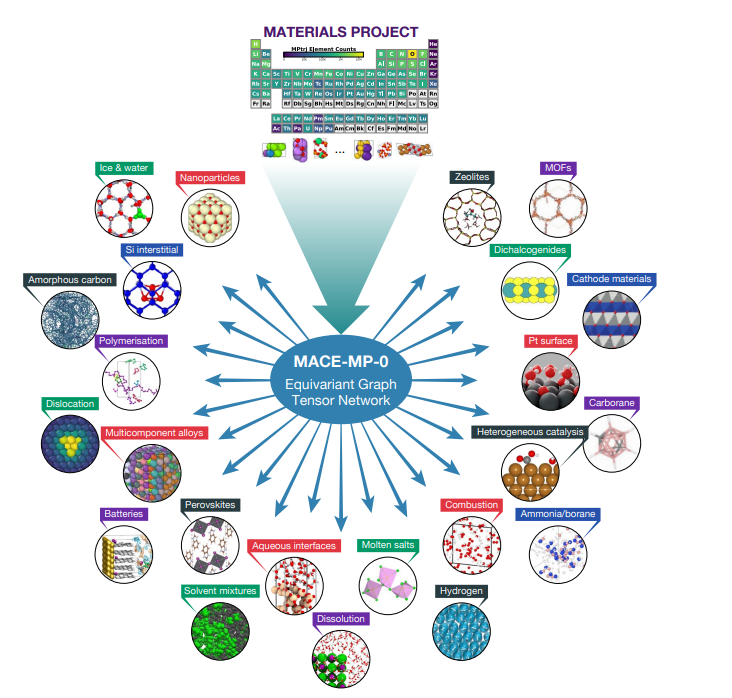
James Quirk
@jquirk_cmt
Postdoctoral researcher at Newcastle University.
Computational solid state, energy materials, and anything that has grain boundaries.
ID: 1394592483343048705
18-05-2021 09:55:44
33 Tweet
47 Followers
66 Following

Looking forward to the Faraday Institution Conference today! Lots of group representation with posters from James Quirk Frazer N. Forrester Ana Carolina Dutra solbat-faraday FI-Degradation 🔋🔌

.Keith McKenna speaking about grain boundaries in emerging PV materials at #emrsfall2023.


After a saga of rejections, this paper is eventually published! Nathan Davison James A. Dawson Facile mechanochemical reduction and lithium‐ion doping of transition‐metal oxides - Davison - European Journal of Inorganic Chemistry - Wiley Online Library …mistry-europe.onlinelibrary.wiley.com/doi/10.1002/ej…

Now published in Journal of the American College of Surgeons (JACS): Dynamic Lone Pairs and Fluoride-Ion Disorder in Cubic-BaSnF4 pubs.acs.org/doi/10.1021/ja…. Christian MASQUELIER

A fully funded PhD studentship is available within the York CDT in Sustainable Materials for Net Zero to work on the discovery of new sustainable permanent magnets using predictive materials modelling. Deadline 03/01/24. UoY School of Physics, Engineering and Technology SusMatZero CDT t.ly/rYk9K

Surfaces and grain boundaries are central to the properties of polycrystalline materials. We find that the energy required to ''separate'' grain boundaries can be lower than in bulks, which causes cracking in grain boundaries arxiv.org/abs/2312.05294 Zeyu Deng (Jerry)

Happy New Year! Great to start 2024 with a new paper on the optimisation of conductivity in halide solid electrolytes. First of many collaborations with Andy Sun at Western University. Calculations by James Quirk and myself 🔋💻 Newcastle Chemistry Engineering and Physical Sciences Research Council onlinelibrary.wiley.com/doi/abs/10.100…



James Quirk led this very nice work investigating the role of small hole polarons in recombination processes in TiO2, finding nonradiative recombination to be significantly enhanced at grain boundaries. go.aps.org/3nl1sSo

Happy to announce our Allegro model for unified learning of electric enthalpy, forces, polarization, Born charges, and polarizability through exact physical constraints. arxiv.org/abs/2403.17207 Boris Kozinsky Chuin Wei Tan Anders Johansson Cameron J. Owen Materials Intelligence Research @ Harvard Harvard SEAS


New work published in Advanced Energy Materials from James Quirk on amorphous thiosilicate-based solid electrolytes in collaboration with Prof. Sun 👏 Newcastle Chemistry @AdvSciNews onlinelibrary.wiley.com/doi/10.1002/ae…

What happens when you reduce a Ca complex in a ball-mill? Find out on our Research Square #preprint. A mammoth effort led by Alex, in collaboration with Chemistry@Bath Uni UoM Chemistry UoM Photon Science Newcastle Chemistry and UoBChemistry researchsquare.com/article/rs-465… Leicester Chemistry #chemtwitter

Check out our calcium electride work now out in J. Am. Chem. Soc.! A tour de force led by Alex and James Quirk, covering mechanochemical synthesis, magnetism and computational studies (and more!) pubs.acs.org/doi/10.1021/ja…

How did we work this out? Thanks to the invaluable help of some fantastic collaborators! James Quirk and James A. Dawson calculated the structure of our new material, complemented by a suite of magnetic measurements done by Floriana Tuna and David Collison EPSRC National Research Facility for EPR Newcastle Chemistry


So happy our work on anti-perovskite surfaces is out now in ACS Materials Letters ! Learning how DFT uncovers the mysteries of SSBs has been a joy!Thank you James A. Dawson for my PhD supervision+James Quirk+Ying for helping with defects and NEBs,respectively.Newcastle Chemistry pubs.acs.org/doi/10.1021/ac…

A real tour de force on the modelling of “messy” materials by James Quirk this morning! #f24mrs


A nice early Christmas present! Great simulations using a new MLFF from Ying. Aberdeen Solid State Chemistry Oscar Ballantyne Dylan Tawse Newcastle Chemistry




